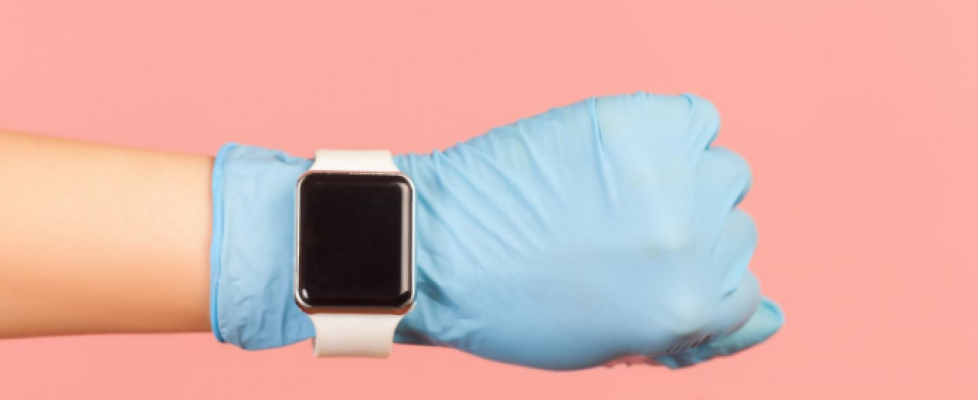COVID Spurred Patient Engagement with Remote Patient Monitoring
The pandemic was marked by remote patient monitoring and telehealth use to monitor and manage health at home, but future innovation is needed to meet consumer needs.
By Sara Heath
June 16, 2021 – More people than ever have bought remote patient monitoring into their homes, with Deloitte finding that 14 percent of healthcare consumers bought a fitness tracker like a smartwatch for at-home self-management during the pandemic.
The data, presented in a report looking at the overall trend of mobile applications in pandemic-era households, showed most consumers used those smartwatches to count their steps each day, but tracking at-home workouts, heart health, and sleep quality were also common uses.
This underscores the focus on at-home health management many consumers gained during the pandemic. As patients found themselves with limited care access options—either because a clinic had to shutter its doors during the initial COVID-19 surge or because the patient was fearful of exposure—they turned to remote patient monitoring and other wellness tools to supplement care.
Overall, 58 percent of households had at least one smartwatch or fitness tracker, Deloitte found, and 39 percent of consumer respondents personally owned a smartwatch. And again, the pandemic may have sparked adoption, with 14 percent of consumers telling Deloitte they bought their smartwatches at the start of the COVID-19 public health crisis.
There is still considerable room for growth in the at-home patient self-management market, the report added. Of those interested in buying a wearable, 39 percent said cost was their biggest barrier, coming in as the most commonly cited issue by a considerable margin.
Still, the pandemic has shined a light on the benefits a health and fitness tracker like a wearable can have on health and wellness, the Deloitte researchers said.
“The pandemic was a giant beta test of behaviors that broke down barriers, removed distance and prioritized health and wellness,” Jana Arbanas, vice chairman, Deloitte LLP and US telecom, media and entertainment sector leader, said in a statement. “Our survey revealed that people are willing to adopt new products and services even while adjusting to challenging circumstances in trying times.”
Twenty-seven percent of those interested in getting a wearable fitness tracker said the tracker could have health and wellness benefits, up from 24 percent of consumers saying the same before the pandemic.
It will be essential for digital technologies to deliver on this, Arbanas added.
“This adaption and need for inventive technology are placing more pressure on companies to innovate even faster,” Arbanas explained. “As we’ve seen throughout the pandemic, this innovation should focus around the essential elements of daily life to help people thrive in their crowded homes — underscoring the simple fact that technology and invention, ideally, is about supporting human needs.”
Smartwatches and fitness trackers are delivering on these capabilities, Deloitte acknowledged. For example, many smartwatches have heart rate monitors, can measure blood oxygen levels, and can detect respiratory rate. These functions might be helpful in flagging COVID-19, a largely respiratory illness.
“This adaption and need for inventive technology are placing more pressure on companies to innovate even faster,” the Deloitte researchers wrote in the report. “As we’ve seen throughout the pandemic, this innovation should focus around the essential elements of daily life to help people thrive in their crowded homes — underscoring the simple fact that technology and invention, ideally, is about supporting human needs.”
Deloitte also reported an uptick in telehealth adoption and use on the consumer side, the report furthered. More than half of healthcare consumers had a telehealth appointment during the pandemic, and 29 percent answered they helped someone in their household connect to a telehealth appointment.
These telehealth visits yielded an 82 percent patient satisfaction rate, with 44 percent saying telehealth was more convenient than traditional in-person care. In the context of the COVID-19 pandemic, 43 percent cited decreased odds of virus exposure as a telehealth benefit. A fifth of respondents said getting a telehealth appointment was easier than for in-person appointments.
These benefits leave 62 percent of consumers saying they plan to continue using virtual visits in say way now that the pandemic may be subsiding.
But there will still be room for in-person care, the Deloitte researchers said, joining a chorus of other industry experts. In addition to the pure need for in-person appointments—there are important diagnostic purposes for an in-person appointment—some patients miss aspects of visiting the office.
For about a quarter (28 percent) of respondents, interpersonal patient-provider interactions were missing from telehealth appointments, while a notable 17 percent of consumers complained about connectivity issues.
Some patients also had misgivings about personal privacy and access to their medical information and records.
Nevertheless, telehealth and remote patient monitoring or wearable devices met consumer needs during the pandemic. Moving forward, it will be essential for health technology developers to drive innovation to cater to consumer engagement needs.
“The onset of the COVID-19 pandemic was like a time machine that suddenly propelled us tens of years into the future,” Paul Silverglate, vice chairman, Deloitte LLP and US technology sector leader, explained in the press release. “As well as we have adapted, we hit the limits of what our current technology can deliver. We are excited to see how faster connections, better devices, and new apps change how we live, work and play in the future.”

